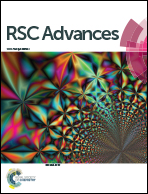Self-assembled monolayers of thiolates on metals: a review article on sulfur-metal chemistry and surface structures
Abstract
A review article on fundamental aspects of thiolate self-assembled monolayers (SAMs) on the (111) and (100) surfaces of the Cu and Ni groups is presented. In particular this work is focused on two important points that remain poorly understood in most of these metals: the chemistry of the S-metal interface, which strongly depends on the nature of the metallic surface, and the role of the interaction forces that not only guide the self-assembly process but also influence the surface structure of SAMs. In addition to recent experimental and theoretical data on these issues we present new density functional calculations including van der Waals forces for an important number of known thiolate surface structures as a function of the hydrocarbon chain length.


 Please wait while we load your content...
Please wait while we load your content...